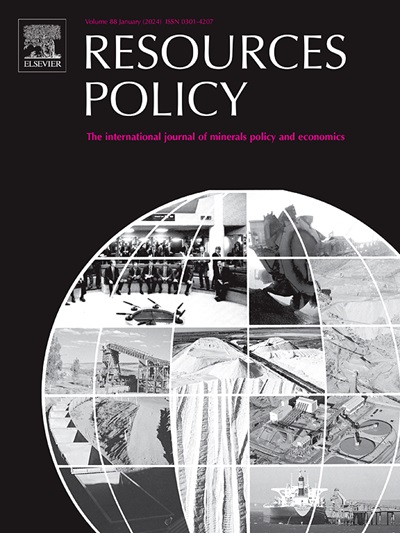Criteria-driven socio-environmental maturity modelling for mining: driving positive sustainability attitudes and perceptions at diverse operational scales
IF 10.2
2区 经济学
0 ENVIRONMENTAL STUDIES
引用次数: 0
Abstract
We research whether real-terms change can be created by considering the socio-environmental impacts of mining from a position of care, such as that already demonstrated in safety culture. Socio-environmental culture, the prevailing attitudes and perceptions towards risk, is used to emphasise the reciprocal interdependencies between environment and people. Social and environmental maturity models were formulated for risks in formalised, regulated mining and mining practitioners self-scrutinised their performance against the 4 levels of culture maturity in the models. Self-assessment studies revealed that sites performed best in local employment and stakeholder relationships but fell short in post-closure planning and emergency preparedness. Bowtie analysis was utilised to further validate the models in the context of hypothetical end-member scenarios of immature and mature companies managing tailings permits. We discuss how this self-assessment can facilitate dialogue and highlight assumptions in a company's cultural development, and we debate what constitutes sustainable, customary philanthropy principles.

标准驱动的采矿社会环境成熟度模型:在不同的业务规模上推动积极的可持续性态度和观念
我们研究是否可以通过从关心的角度考虑采矿的社会环境影响来创造实际的变化,例如在安全文化中已经证明了这一点。社会环境文化,即对风险的普遍态度和看法,被用来强调环境与人之间的相互依存关系。社会和环境成熟度模型是为正规化、规范化的采矿业风险制定的,采矿业从业者根据模型中的4个文化成熟度水平对自己的表现进行自我审查。自我评估研究表明,这些场址在当地就业和利益攸关方关系方面表现最好,但在关闭后规划和应急准备方面表现不佳。利用鲍蒂分析进一步验证了模型在不成熟和成熟公司管理尾矿许可证的假设端成员情景下的有效性。我们讨论了这种自我评估如何促进对话,突出公司文化发展中的假设,并讨论了什么构成了可持续的、习惯的慈善原则。
本文章由计算机程序翻译,如有差异,请以英文原文为准。
求助全文
约1分钟内获得全文
求助全文
来源期刊

Resources Policy
ENVIRONMENTAL STUDIES-
CiteScore
13.40
自引率
23.50%
发文量
602
审稿时长
69 days
期刊介绍:
Resources Policy is an international journal focused on the economics and policy aspects of mineral and fossil fuel extraction, production, and utilization. It targets individuals in academia, government, and industry. The journal seeks original research submissions analyzing public policy, economics, social science, geography, and finance in the fields of mining, non-fuel minerals, energy minerals, fossil fuels, and metals. Mineral economics topics covered include mineral market analysis, price analysis, project evaluation, mining and sustainable development, mineral resource rents, resource curse, mineral wealth and corruption, mineral taxation and regulation, strategic minerals and their supply, and the impact of mineral development on local communities and indigenous populations. The journal specifically excludes papers with agriculture, forestry, or fisheries as their primary focus.
 求助内容:
求助内容: 应助结果提醒方式:
应助结果提醒方式:


